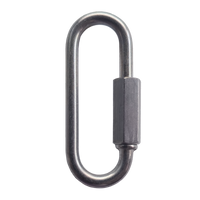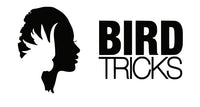
Galah
The domestication of animals is something that humans have done through breeding for millennia to manipulate animals with the intention of creating ones that are used for service or companionship, that are suited to be in human society and are aesthetically pleasing.
Domestication is what we have done with dogs, which started out as wolves. Humans bred dogs together which both possessed qualities they wanted to carry on – from personality traits to size to coloring and markings. It is more complicated than this, but long story short, we have developed the Chihuahua from a wolf. You have to admit that is pretty impressive.
Parrots are still very much wild animals. Many of the larger, long-lived species living with us probably had wild grandparents. Even with all the breeding that is done in captivity, birds cannot be considered a domestic pet…yet.
I think it is fair to say, however, that we have begun that long process. Mind you, this is an undertaking that is hundreds, even thousands of years in the making and I don’t think there are many people who are intentionally setting out to breed birds with domestication in mind, but I think it is happening nonetheless.
You are probably wondering what any of this has to do with what your bird should weigh, but I assure you it is very relevant!

Because we are so often discussing health and diet here at Birdtricks, we are always encouraging people to weigh their birds frequently. Since it is in every parrot’s nature (even our companion parrots) to mask illness so as not to advertise to passing predators that they are weak and compromised, they leave us two ways to monitor their health: 1) by assessing the quality of their droppings and 2) watching for dramatic weight fluctuations. No matter how hard they try, they cannot cover up in these areas. There is unquestionably something going on with a bird that has lost weight rapidly or is continually rising in weight.
If you are to successfully gauge your bird’s health by weighing him, you must know what your bird’s weight should be. We get numerous questions asking us what the correct weight for a (insert your bird’s species here) should be. It is a very hard question to answer because the size of birds within the same species can naturally vary dramatically.
I have two healthy male cockatiels – one weighs 74 grams, the other weighs 104 grams. That is a HUGE difference.
If you were to do an online search, you would find a number of charts that list the “average” weights of the most commonly kept species. Many are based on the weights of wild birds.
But someone who has an African grey, for instance, and does not have exposure to other African greys, he will have no means to judge whether his bird is large or small for its species. The weight of a Congo African grey can vary from 400 to 700 grams because they occupy a very large area in central Africa and, regionally, they vary in their size and shade. If it turns out that his CAG is small and weighs 600 grams, he would have an overweight bird without knowing it based on the information on weight charts.
In captivity, the birds that are being bred are not selecting their own mate. They are paired with another of their species based on availability and willingness. We can only speculate about what qualities a wild female bird looks for when selecting the right mate but I suspect there is much more to it than picking one that is healthy and strong enough to defend the nest. When humans make those selections for birds, it begins the domestication process.
There are other complications where the subspecies of some parrots, such as the greater sulphur-crested cockatoos which most people are unable to differentiate are unwittingly being bred together in captivity.
As we increase the number of captive-bred birds, we are clouding what was once the norm. Weights of wild birds are not necessarily comparable to the weight of captive birds anymore. With a captive bred bird, we can’t be completely certain of its origins or whether it is fully the species we assume it to be. That is only going to get worse as time passes and the weight charts and lists available online are barely usable even as guidelines.
The keel bone is the plate running between the ribs.
The best way to find YOUR bird’s optimum weight is by going to the vet, determining that your bird is healthy and using THAT weight as the norm for the future.
The flesh surrounding your bird’s keel bone, the sharp bone that runs down the center of your bird’s chest, is very telling when trying to judge if your bird is at a healthy weight. The flesh should be nearly level with the ridge of the bone. You should neither be able to grip the bone with your fingers nor feel flesh extending past it. The flesh should feel firm and muscular.
There are different degrees of “overweight”, of course – the difference between being heavy and being obese, and for this reason, it is best to let your avian vet make the determination about your bird’s healthy weight.
Once you do this, you can disregard any weight averages you come across online and know that the weight of someone else’s same species bird will not be relative to your bird’s weight.
As is always the case, a companion bird’s weight is in the hands of its human. We should provide opportunities for exercise, and encourage our birds to walk, climb and fly as much as possible.
Their diet should include fresh produce EVERY DAY and a healthy brand of pellets. It should not include human snack foods or be solely comprised of high calories foods like seed. If you are feeding your bird in the manner you should be, its weight will automatically be appropriate.
Click here to learn about parrot nutrition.
Patty Jourgensen specializes in avian health, behavior and nutrition and has been working with and caring for rescue birds since 1987.



1 comment
Do you know how much my parrot let should weigh?
Leave a comment